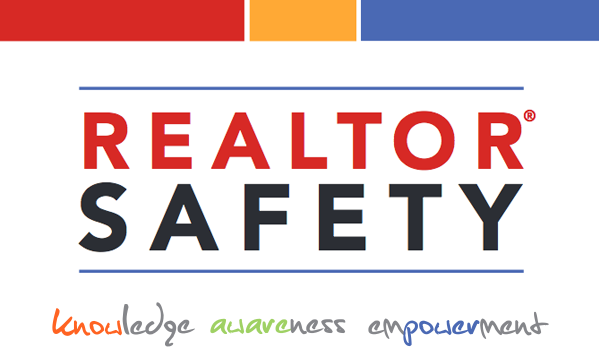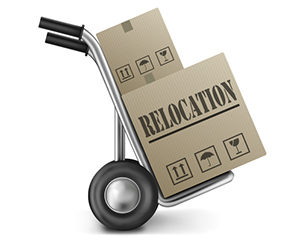Have you had the safety talk with your clients yet? It’s not only for their safety but for yours too.
It’s a conversation far too many real estate professionals omit from their discussions with home sellers and buyers. Most real estate safety information centers on how to keep you safe when meeting new clients during showings or at open houses. But safety from your clients’ perspective presents an entirely new set of issues.
“When you go to listing appointments, do a security survey with your clients,” suggests safety specialist Tracey Hawkins, founder of Safety and Security Source and a former real estate professional. “Discuss with them how to make their home burglarproof when it’s on the market and how to keep their belongings safe. No other real estate agent is talking about that. This can be a way to distinguish yourself in a listing presentation. They may have already met with four or five other agents, but when you provide them with something different — a handout for a seller safety plan — you help set yourself apart.”
Hawkins provides a checklist for agents to use as they walk through homes with sellers, looking for items to tuck away during showings like those prescription medications and gaming systems and checking the adequacy of the home’s lighting and door locks. She also says safety is an important conversation to have with home buyers prior to viewing homes for sale, particularly vacant homes like distressed properties where squatters could be present or maintenance issues may pose added dangers.
Safety Tips for Sellers: 6 Talking Points to Cover
Safety experts offer the following tips on the safety topics you should discuss with home sellers.
1. Prescription drugs: Remove or lock them up prior to showings.
A growing number of real estate professionals are reporting theft of prescription drugs from sellers’ homes during open houses. Indeed, nearly half of 164 real estate professionals recently surveyed at the Greater San Diego Association of REALTORS® Expo reported knowledge of prescription drug theft taking place at open houses. As such, SDAR has led a charge in raising awareness among the REALTOR® community about the dangers of leaving prescription drugs out or in unlocked cabinets during showings.
Earlier this year, SDAR teamed up with the law enforcement and medical communities to create the Safe Homes Coalition. The team created a public service announcement, airing on local television and radio stations, and has also been raising awareness by distributing more than 8,000 plastic prescription drug collection bags since March. Real estate professionals are being encouraged to have their home sellers use the bags to remove prescription drugs from the homes prior to showings or to properly dispose of expired prescription drugs (the bags include a list of drop-off centers for safely disposing of expired medications).
“Similar to asking our clients to remove clutter and valuables when holding open houses, this is another key item to protect that we want our REALTORS® to advise their clients on,” says Leslie Kilpatrick, president of SDAR. “It’s a safety issue for clients and real estate professionals. We don’t want to be confronting someone taking this in a home. We also want our sellers to be protected and to keep their medications safe.”
2. Stow away valuables: Remind clients that you can’t be responsible for thefts.
Valuables include everything from the mail left on the countertops (which may contain personal information and bank statements) to such items as jewelry, artwork, cellphones, and gaming systems.
Agents need to do their part, too. In capturing virtual tours or photographs of the home for marketing purposes, make sure such valuables are not photographed, like a seller’s priceless coin collection, wine cellar, or equipment in a fully outfitted media room.
“Too many people fail to consider that criminals nowadays can case houses from the comfort of their computer,” says Hawkins, who offers safety training for real estate professionals through her Consumer Safety and Security Specialist program. “They can see all the person’s valuables when you put them in fliers and on a website. If the valuables are not being sold with the house, why do they need to be shown anyway?”
Also, Hawkins urges agents to tell their clients at the forefront of their relationship: “I can’t protect your valuables.” Remind them that as a seller’s agent you won’t often be present at home showings, and if you are, you likely won’t be following prospective buyers all around the house, particularly if you’re hosting an open house.
“Before sellers leave the house for a showing, they need to be responsible for walking through the house and making sure everything of value is out of sight,” Hawkins says. “Then, if that antique ring or camera ever goes missing, you won’t get that angry phone call from your client. You already warned them. But if you didn’t say anything to them, they may assume you’re responsible.”
3. Remove family photos: It’s for your clients’ safety.
Many real estate professionals advise sellers to remove family photos from their home. But the conversations are often framed around staging and making it so prospective buyers can imagine themselves living there. Instead, Hawkins says, focus on the safety of their family.
“Clients may be reluctant to remove their family photos just because you say it will help new owners envision it becoming their house,” Hawkins says. “I tell agents to tell sellers: You don’t know who’s walking through the house. You have photos of your wife, teenage daughter, children displayed, and you could have a pedophile or stalker walking through your home. Who would leave their family photos up after you say that?”
4. Make a house safe for the buyers and the agent.
Turn on the lights prior to showings — whether it’s daytime or evening — so that agents and buyers can move safely through the home and not have to face any dark unknowns. (During the initial safety check of a listing, practitioners should ensure all rooms have adequate lighting as well.)
Also, sellers should make sure there are no potential hazards in their home, like loose floorboards or carpets. They don’t want to risk someone tripping and falling in their home and potentially open themselves up to liability.
Hawkins says it’s important to tell sellers to remove not only weapons like guns before showings but also not-so-obvious weapons too. For example, many home owners may have a block of knives on their kitchen countertops; remove these for the agent’s safety as well, Hawkins says.
5.Keep the house locked: Consider extra monitoring.
Another safety reminder for your clients: Doors need to be kept locked at all times. A home is being presented to the public, and it may attract intruders.
Hawkins tells real estate professionals to talk to their home sellers about deadbolt locks and explain to them why they’re safer. Also, sliding glass doors can be secured with bars and extra locks. Motion-sensor lights can be a good option for outdoor areas for added security. Windows should be checked to make sure they are locked securely.
Some real estate professionals are taking an extra step with some of their properties, particularly vacant ones, and talking to sellers about installing a wireless security system. A company called Presence allows you to turn your old smartphone device into a home security system, for free. By uploading the video-monitoring app, you can use your old smartphone to feed videos remotely to your current phone to keep an eye on the listing. You can also use a motion-detection sensitivity feature to alert you to any detected movements in front of the camera and send a video clip to you via e-mail.
6. Beware of unexpected visitors coming to your doorstep.
You may need to warn your clients that when their house is for sale, they may also get some unexpected visitors who ask to see their home.
“I’ve heard agents talk about clients who have had homes on the market, and a couple may knock on the door and just hand them a business card and ask to see the house, and the seller lets them in,” Hawkins says.
Instruct your clients of the proper procedures for showings: Only real estate professionals using the lockbox should gain access to their home.
What’s more, a growing rental fraud scam is causing more home sellers to report renters who are showing up at their doorsteps, too, ready to move in. Real estate professionals say their for-sale listings are getting scraped from websites by scammers who then place them as a rental listing on sites like Craigslist.
Besides their efforts with the Safe Homes Coalition, SDAR also has recently launched a fraud awareness campaign aimed at countering such real estate rental fraud. San Diego had the sixth highest level of rental fraud in the country for 2012, according to SDAR. The association has distributed red and black stickers to its members, which can be placed in the windows of vacant for-sale homes announcing that the home is “Not for Rent.”
“The stickers will make it clear to anybody viewing the outside of the home that it is a for-sale home only,” Kilpatrick says. “The stickers include a phone number for the listing agent and the district attorney’s office, and also a link to the FBI’s Internet Crime Complaint Center.”
For Your Buyers: 3 Safety Lessons for Home Shoppers
Safety needs to be an added component in your discussions with buyers, too.
1. Educate yourself on the safety of an area.
You may quietly have some concerns over the safety of a neighborhood, and your buyers might express concerns of their own. As a real estate professional, you can’t be viewed as steering them to avoid certain communities. But you can tell them the importance of educating themselves about neighborhoods. For example, you might advise them to drive by the property at different times of the day to get a better sense of the neighborhood for themselves and to talk to neighbors.
Some real estate professionals provide a list of third-party resources for their buyers to check on crime statistics in an area, such as Family Watchdog to locate registered sex offenders in an area; CrimeMapping.com’s mobile app to uncover crime activity near your current location; and sites like DiedInHouse.com that reveal if any deaths occurred at the property in the past.
2.Take extra precautions in distressed, vacant homes.
As real estate practitioner, you’ve been told to take extra precautions in viewing distressed properties, but you may need to warn your buyers too.
First, when showing an REO, make sure it’s safe to go in, Hawkins says. Do a perimeter search around the property before entering. Do you see broken windows, a kicked-in door, or any signs of someone living there through the windows (such as a sleeping bag on the floor or food left out)? If you see such signs that a squatter may be present, don’t go inside.
Also, homes that have been vacant may have maintenance issues. Buyers and agents may need to watch their footing as they tour the house, navigating away from any loose floorboards, steering clear of a rotted deck, and avoiding loose railings. Loose gutters or lighting fixtures may pose added dangers.
Abandoned animals might be inside too. In an REO, pets can sometimes be left by the previous owner, or wild animals may find a way in. Never approach an animal. It can become hostile. Contact your local humane society or shelter.
“These are not things you usually need to worry about in a home,” Hawkins says. “But in a distressed home that may have sat vacant, you need to be careful and prepare your clients to be more careful too.”
3. Prevent buyer regret — and illness.
Another growing concern reported with REOs: drug contamination, and how a home’s tainted history can get lost if it sits in foreclosure limbo. The number of meth- or clandestine drug-contaminated homes is growing, according to the Drug Enforcement Agency. These drugs can seep into a home’s surfaces, and unsuspecting buyers who move in may face not only a range of respiratory illnesses or neurological problems but also a costly decontamination process of the home.
The risk from meth and clandestine contamination in homes is a rising concern that has prompted more real estate professionals to raise the issue to their clients. For example, homes where marijuana was produced may be more prone to mold damage. Rewired electrical work also can present fire dangers too.
No federal disclosure law exists for meth or marijuana grow houses, and the disclosure regulations vary greatly by state. Oftentimes, standard home inspections won’t turn up drug contamination problems either, but requires extra testing by specialists.
Some real estate professionals have been trained to look for the signs, like the strong smell of urine or chemical smells like ammonia or acetone; trash filled with products like paint thinner, lighter fluid, drain cleaners, and cold tablet containers; and chemical stains on the toilets and bathtubs. Or, buyers and agents sometimes may feel some of the signs when they step inside the property, such as a burning sensation in the eyes or throat.
Buyers can be encouraged to check the Drug Enforcement Agency’s National Clandestine Laboratory Register, a searchable database of addresses that have been uncovered by law enforcement agencies to have clandestine chemicals or drug labs. Some counties and states also have databases to track such homes. They can also purchase meth-testing kits or have a professional test for contamination.
Remember, It’s For Your Safety Too
Having a safety talk with your clients is an important element in REALTOR® safety too. If sellers keep valuables out and prescription medications out in the open during showings, you may find yourself in that potentially dangerous situation of having a criminal in your midst and being unsure what to do.
In those cases, do nothing, Hawkins says. “The person is a criminal and they could attack or assault you if you confront them,” Hawkins says. “That puts you in a bad situation.” Let law enforcement later handle it.
Educating buyers and sellers about safety issues helps avoid trouble and, in the end, keeps everyone safer in a transaction.



